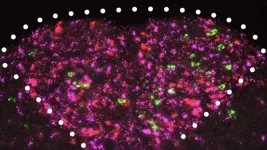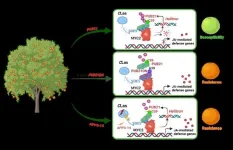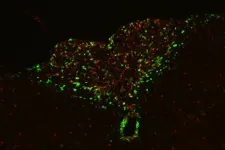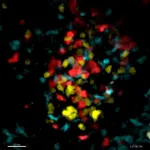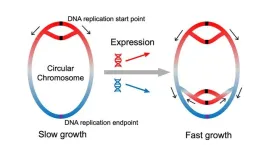(Press-News.org) Researchers from the KATRIN (Karlsruhe Tritium Neutrino) experiment report the most precise measurement of the upper mass limit of the neutrino to date, establishing it as 0.45 electron volts (eV) – less than one-millionth the mass of an electron. The findings tighten the constraints on one of the universe’s most elusive fundamental particles and push the boundaries of physics beyond the Standard Model. Neutrinos – electrically neutral elementary particles – are the most abundant particles in the universe and exist as three distinct types or “flavors”: electron neutrino, muon neutrino, and tau neutrino. These flavors oscillate, meaning a single neutron can transform into each type as it travels, providing compelling evidence that neutrinos possess mass that contradicts the Standard Model’s original assumption of massless neutrinos. However, their exact mass remains one of the great mysteries of particle physics. Here, Max Aker and the KATRIN Collaboration present the results of the first five measurement campaigns of the KATRIN experiment. The KATRIN experiment determines the neutrino’s mass by analyzing the beta decay of tritium. During this decay, a neutron transforms into a proton, emitting both an electron and an electron antineutrino – the latter being the neutrino’s antiparticle. By analyzing the distribution of total decay energy between the emitted electron and the electron antineutrino, the neutrino’s mass can be inferred. Over 259 days between 2019 and 2021, the KATRIN Collaboration measured the energy of approximately 36 million electrons – a dataset six times larger than previous runs. The findings establish the most stringent laboratory-based upper limit on the effective electron neutrino mass, placing it at < 0.45 eV with a 90% confidence level. This result marks the third refinement of the neutrino mass limit and improves upon the previous limit by a factor of 2. “The neutrino mass measuring campaign of the KATRIN experiment will end in 2025 after reaching 1000 days of data acquisition,” writes Loredana Gastaldo in a related Perspective. “Analysis of the full data set gained from this grand project will allow for estimating the effective electron neutrino mass close to the projected value of 0.3 eV at 90% confidence level.”
END
KATRIN experiment sets most precise upper limit on neutrino mass: 0.45 eV
Summary author: Walter Beckwith
2025-04-10
ELSE PRESS RELEASES FROM THIS DATE:
How the cerebellum controls tongue movements to grab food
2025-04-10
By studying the skilled movements of marmoset tongues, researchers have discovered that Purkinje cells (P-cells) in a brain region called the cerebellum signal to stop protrusion as the tongue approaches its target, according to a study published April 10th in the open-access journal PLOS Biology by Reza Shadmehr from Johns Hopkins School of Medicine, U.S., and colleagues.
We use our tongue to shape the air and generate sounds to communicate, and we use our tongue to evaluate food morsels and transport them through the oral cavity when eating. These skillful acts involve coordination of more ...
It’s not you—it’s cancer
2025-04-10
Cancer ravages both body and mind. If you’ve ever lost loved ones to the disease, you might recognize the physical and emotional changes cancer patients often endure during their final months. They seem drained of strength and spirit. Even people who’ve maintained a positive outlook throughout their lives can enter a state of despair. New research published in Science suggests apathy and lack of motivation are symptoms of a condition called cancer cachexia. Cold Spring Harbor Laboratory ...
Drug pollution alters migration behavior in salmon
2025-04-10
In the largest study of its kind to date, a team of international researchers has investigated how pharmaceutical pollution affects the behaviour and migration of Atlantic salmon.
The study, led by the Swedish University of Agricultural Sciences, revealed that commonly detected environmental levels of clobazam – a medication often prescribed for sleep disorders – increased the river-to-sea migration success of juvenile salmon in the wild.
The researchers also discovered that clobazam shortened the time it took for juvenile salmon to navigate through two hydropower dams along their migration route – obstacles that typically ...
Scientists decode citrus greening resistance and develop AI-assisted treatment
2025-04-10
In a groundbreaking study published in Science, a research team led by Prof. YE Jian from the Institute of Microbiology of the Chinese Academy of Sciences has identified the first mechanism of citrus resistance to citrus greening disease, or huanglongbing (HLB).
Utilizing artificial intelligence (AI), the team has also developed antimicrobial peptides that offer a promising therapeutic approach to combat the disease. This discovery addresses a long-standing challenge in the agricultural community—the absence of naturally occurring HLB-resistant genes in citrus.
Citrus ...
Venom characteristics of a deadly snake can be predicted from local climate
2025-04-10
Local climate can be used to predict the venom characteristics of a deadly snake that is widespread in India, helping clinicians to provide targeted therapies for snake bite victims, according to a study publishing April 10 in the open-access journal PLOS Neglected Tropical Diseases by Kartik Sunagar and colleagues at the Indian Institute of Science.
Russell’s viper (Daboia russelii) is found across the Indian subcontinent and is responsible for over 40% of snake ...
Brain pathway links inflammation to loss of motivation, energy in advanced cancer
2025-04-10
The fatigue and lack of motivation that many cancer patients experience near the end of life have been seen as the unavoidable consequences of their declining physical health and extreme weight loss. But new research from Washington University School of Medicine in St. Louis challenges that long-held assumption, showing instead that these behavioral changes stem from specific inflammation-sensing neurons in the brain.
In a study published April 11 in Science, the researchers report that they identified a direct connection between cancer-related inflammation ...
Researchers discover large dormant virus can be reactivated in model green alga
2025-04-10
Researchers had been studying the green alga Chlamydomonas reinhardtii for decades without seeing evidence of an active virus within it — until a pair of Virginia Tech researchers waded into the conversation.
Maria Paula Erazo-Garcia and Frank Aylward not only found a virus in the alga but discovered the largest one ever recorded with a latent infection cycle, meaning it goes dormant in the host before being reactivated to cause disease.
“We’ve known about latent infections for a long time,” said Aylward, associate professor in the Department of Biological Sciences. ...
New phase of the immune response uncovered
2025-04-10
The research groups led by Wolfgang Kastenmüller and Georg Gasteiger employed innovative microscopy techniques to observe how specific immune cells, known as T-cells, are activated and proliferate during a viral infection. Their findings revealed novel mechanisms: the immune system amplifies its defense cells in a far more targeted way than previously believed.
T-Cells Proliferate and Specialize During the Immune Response
T-cells are crucial defense cells in the immune system. To effectively ...
Drawing board rather than salt shaker
2025-04-10
Bioinformaticians from Heinrich Heine University Düsseldorf (HHU) and the university in Linköping (Sweden) have established that the genes in bacterial genomes are arranged in a meaningful order. In the renowned scientific journal Science, they describe that the genes are arranged by function: If they become increasingly important at faster growth, they are located near the origin of DNA replication. Accordingly, their position influences how their activity changes with the growth rate.
Are genes distributed randomly along the bacterial chromosome, as if scattered from a salt shaker? This opinion, which is held by a majority of researchers, has ...
Engineering invites submissions on AI for engineering
2025-04-10
Artificial intelligence (AI) is playing an increasingly pivotal role in revolutionizing the field of engineering, triggering a new era of technological and industrial evolution. A series of recent breakthroughs in areas like natural language processing, computer vision, and machine learning, with the Nobel Prize-winning work in artificial neural networks and protein structure prediction serving as prime examples, have effectively bridged the gap between the physical and digital worlds. The emergence of general AI technologies, especially large language models, has given rise ...
LAST 30 PRESS RELEASES:
Safety decision-making for autonomous vehicles integrating passenger physiological states by fNIRS
Fires could emit more air pollution than previously estimated
A new way to map how cells choose their fate
Numbers in our sights affect how we perceive space
SIMJ announces global collaborative book project in commemoration of its 75th anniversary
Air pollution exposure and birth weight
Obstructive sleep apnea risk and mental health conditions among older adults
How talking slows eye movements behind the wheel
The Ceramic Society of Japan’s Oxoate Ceramics Research Association launches new international book project
Heart-brain connection: international study reveals the role of the vagus nerve in keeping the heart young
Researchers identify Rb1 as a predictive biomarker for a new therapeutic strategy in some breast cancers
Survey reveals ethical gaps slowing AI adoption in pediatric surgery
Stimulant ADHD medications work differently than thought
AI overestimates how smart people are, according to HSE economists
HSE researchers create genome-wide map of quadruplexes
Scientists boost cell "powerhouses" to burn more calories
Automatic label checking: The missing step in making reliable medical AI
Low daily alcohol intake linked to 50% heightened mouth cancer risk in India
American Meteorological Society announces Rick Spinrad as 2026 President-Elect
Biomass-based carbon capture spotlighted in newly released global climate webinar recording
Illuminating invisible nano pollutants: advanced bioimaging tracks the full journey of emerging nanoscale contaminants in living systems
How does age affect recovery from spinal cord injury?
Novel AI tool offers prognosis for patients with head and neck cancer
Fathers’ microplastic exposure tied to their children’s metabolic problems
Research validates laboratory model for studying high-grade serous ovarian cancer
SIR 2026 delivers transformative breakthroughs in minimally invasive medicine to improve patient care
Stem Cell Reports most downloaded papers of 2025 highlight the breadth and impact of stem cell research
Oxford-led study estimates NHS spends around 3% of its primary and secondary care budget on the health impacts of heat and cold in England
A researcher’s long quest leads to a smart composite breakthrough
Urban wild bees act as “microbial sensors” of city health.
[Press-News.org] KATRIN experiment sets most precise upper limit on neutrino mass: 0.45 eVSummary author: Walter Beckwith

